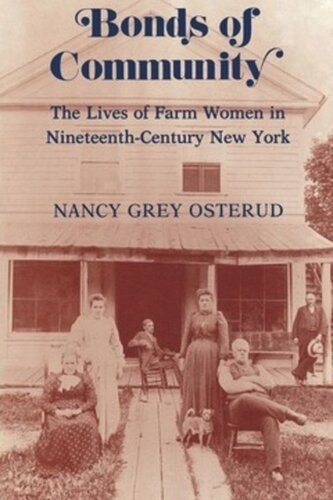

Most ebook files are in PDF format, so you can easily read them using various software such as Foxit Reader or directly on the Google Chrome browser.
Some ebook files are released by publishers in other formats such as .awz, .mobi, .epub, .fb2, etc. You may need to install specific software to read these formats on mobile/PC, such as Calibre.
Please read the tutorial at this link: https://ebookbell.com/faq
We offer FREE conversion to the popular formats you request; however, this may take some time. Therefore, right after payment, please email us, and we will try to provide the service as quickly as possible.
For some exceptional file formats or broken links (if any), please refrain from opening any disputes. Instead, email us first, and we will try to assist within a maximum of 6 hours.
EbookBell Team

4.3
58 reviewsWomen held a central place in long-settled rural communities like the Nanticoke Valley in upstate New York during the late nineteenth century. Their lives were limited by the bonds of kinship and labor, but farm women found strength in these bonds as well. Although they lacked control over land and were second-class citizens, these rural women did not occupy a "separate sphere." Individually and collectively, they responded to inequality by actively enlarging the dimensions of sharing in their relationships with men.
Nancy Grey Osterud uses a rich store of diaries, letters, and other first-person documents, in addition to public and organizational records, to reconstruct the everyday lives of ordinary women of the past. Exploring large questions within the confines of a single community, she analyzes the ways in which notions of gender structured women's interactions with their families and neighbors, their place in the farm family economy, and their participation in organized community activities.
Rare turn-of-the-century photographs of the rural landscape, formal and informal family portraits, and scenes of daily life and labor add a special dimension to Bonds of Community. It should find a ready audience among women's historians, labor historians, rural historians, and historians of New York State.